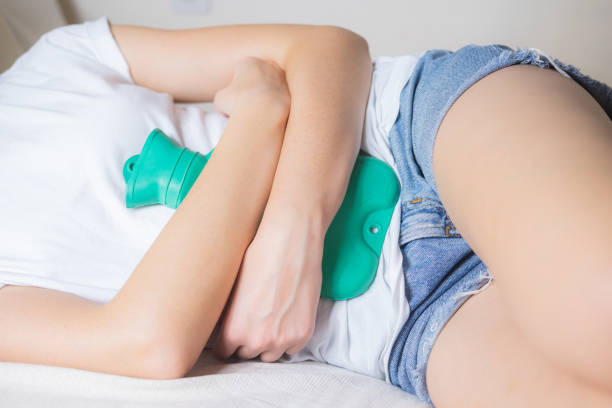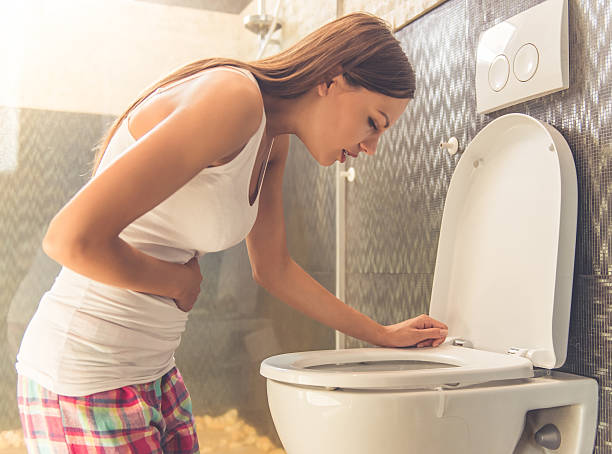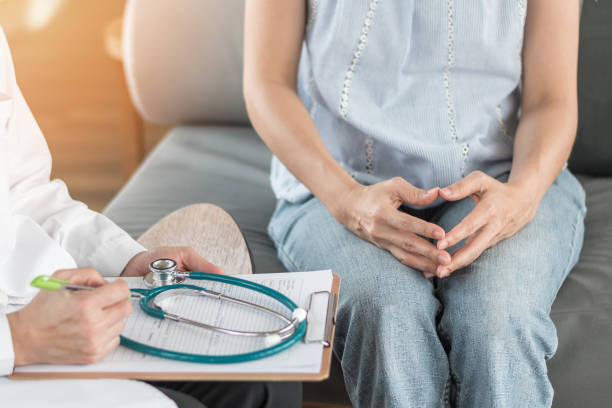What you need to know about endometriosis
The main complication of endometriosis is infertility. Approximately one-third to one-half of women have difficulty getting pregnant.

Picture: iStock
Endometriosis is a painful disorder in which tissue that normally lines the inside of your uterus, the endometrium, grows outside your uterus.
Endometriosis most commonly involves your ovaries, fallopian tubes and the tissue lining your pelvis. It can happen that the endometrial tissue may spread beyond pelvic organs.
With endometriosis, displaced endometrial tissue continues to act as it normally would, but thickens and breaks down and bleeds with each menstrual cycle. Because this displaced tissue has no way to exit your body, it becomes trapped.
When endometriosis involves the ovaries, cysts called endometriomas may form. Surrounding tissue can become irritated, eventually developing scar tissue and abnormal bands of fibrous tissue that can cause pelvic tissues and organs to stick to each other.
Endometriosis can cause pain, especially during your period. Fertility problems also may develop. Fortunately, effective treatments are available.
This condition is estimated to affect over 15% of women of reproductive age even though some may not have the symptoms. Estimates suggest that 20% to 50% of women being treated for infertility have endometriosis.

Picture: iStock
Causes
The exact cause of endometriosis is not certain. The most likely cause for endometriosis is what is called retrograde menstruation, where menstrual blood flows back through the fallopian tubes and into the pelvic cavity instead of flowing out of the vagina.
The endometrial cells then stick to the pelvic walls and surfaces of pelvic organs, where they grow and continue to thicken and bleed in a menstrual cycle.
Another possible cause is that areas lining the pelvic organs possess primitive cells that are able to develop into other forms of tissue, such as endometrium.
Risk factors
• The following women are most at risk of developing endometriosis:
• Women aged 25 to 35 years, even though some cases have been reported in women as young as 12
• Those who have never given birth, because of this many women who are homosexual report with cases of endometriosis. Also in women who delay their first pregnancy
• Early onset of menses or late menopause
• One or more relatives (mother, aunt or sister) with endometriosis
• Any medical condition that prevents the normal passage of menstrual flow out of the body
• History of pelvic infection or pelvic surgery
• Any other abnormalities of the uterus (example fibroids). It usually develops several years after the onset of menstruation and ends temporarily with pregnancy and end permanently with menopause.

Picture: iStock
Signs and symptoms
The primary symptom of endometriosis is pelvic pain, often associated with your menstrual period.
Although many women experience cramping during their menstrual period, women with endometriosis typically describe menstrual pain that’s far worse than usual. They also tend to report that the pain increases over time.
Common signs and symptoms of endometriosis may include:
• Painful periods (dysmenorrhea). Pelvic pain and cramping may begin before your period and extend several days into your period.
• Pain with intercourse. Pain during or after sex is common with endometriosis.
• Pain with bowel movements or urination, most likely during your period.
• Excessive bleeding. You may experience occasional heavy periods or bleeding between periods.
• Infertility. Endometriosis is diagnosed in some women who are seeking treatment for infertility.
• Other symptoms. Fatigue, diarrhoea, constipation, bloating or nausea.

Picture: iStock
Complications
The main complication of endometriosis is infertility. Approximately one-third to one-half of women with endometriosis have difficulty getting pregnant. Endometriosis may block the fallopian tubes.
Some studies suggest that women with endometriosis have an increased risk for development of certain types of ovarian cancer. This risk is highest in women with both endometriosis and primary infertility.
Diagnosis
If you suspect based on the information above that you might have endometriosis, it is important that you see your doctor to get a definitive diagnosis.
Your GP will conduct a pelvic examination and an ultrasound, and if need be refer you to a gynaecologist for a laparoscopy to be sure. Laparoscopy can provide information about the location, extent and size of the endometrial implants to help determine the best treatment options.

Picture: iStock
Treatment
Commonly Nonsteroidal anti-inflammatory drugs or NSAIDs (brufen or naproxen sodium) are commonly used to help relieve pelvic pain and menstrual cramps.
They relieve the pain but have no effect on the endometrial implants or the progression of endometriosis. Oral contraceptive pills are also used and usually relieve the symptoms.
Depo Provera, the injectable contraceptive, is effective in halting menstruation and the growth of endometrial implants, thereby relieving the signs and symptoms of endometriosis.
The following home remedies have been seen to work in some women:
• Warm baths and a hot water bottle can help relax pelvic muscles, thereby reducing cramping and pain.
• Over-the-counter nonsteroidal anti-inflammatory drugs (NSAIDs) such as ibuprofen or naproxen can help ease painful menstrual cramps.
• Getting regular exercise may also help improve symptoms in milder cases.
For more news your way, download The Citizen’s app for iOS and Android.
For more news your way
Download our app and read this and other great stories on the move. Available for Android and iOS.









